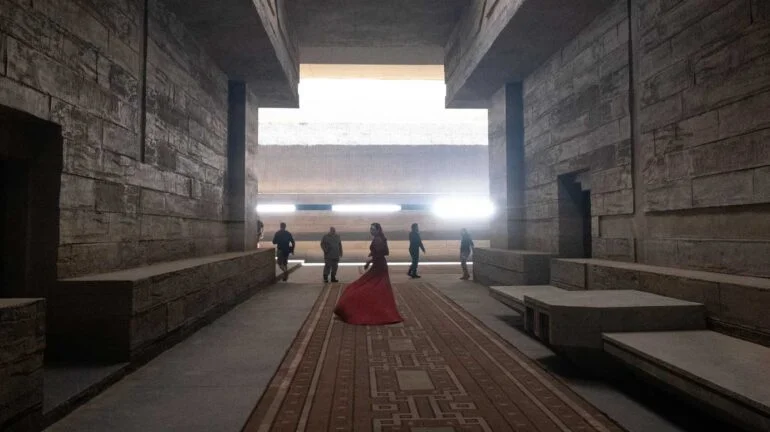“It’s not design for design. It needs to reflect reality. The design needs to have a flow that goes well with the story and supports the story,” Patrice Vermette, production designer of Denis Villeneuve’s Dune, describes the overall visual direction of this movie. This statement warms my heart as to the dedication of Vermette, and the other visual arts creators working on the film, to stay true to the source material.
Above response, one of many enlightening answers to questions surrounding the environmentally-driven production design of 2021’s Dune movie, came from a recent Shaping Design interview with Patrice Vermette.

The desert planet of Arrakis: engulfed in sand, containing violent gusts of wind, intense life-threatening heat, and desperately low in moisture. The home of House Atreides, Caladan: a planet with abundant sources of water, and with it, an abundant source of fish—very much the opposite of Arrakis when it comes to climate. When Vermette states, “the idea of design is always to support the story,” he means that. During the discussion, the production designer explained how those environments, of the worlds in Dune, shaped the design and architecture of the production set.
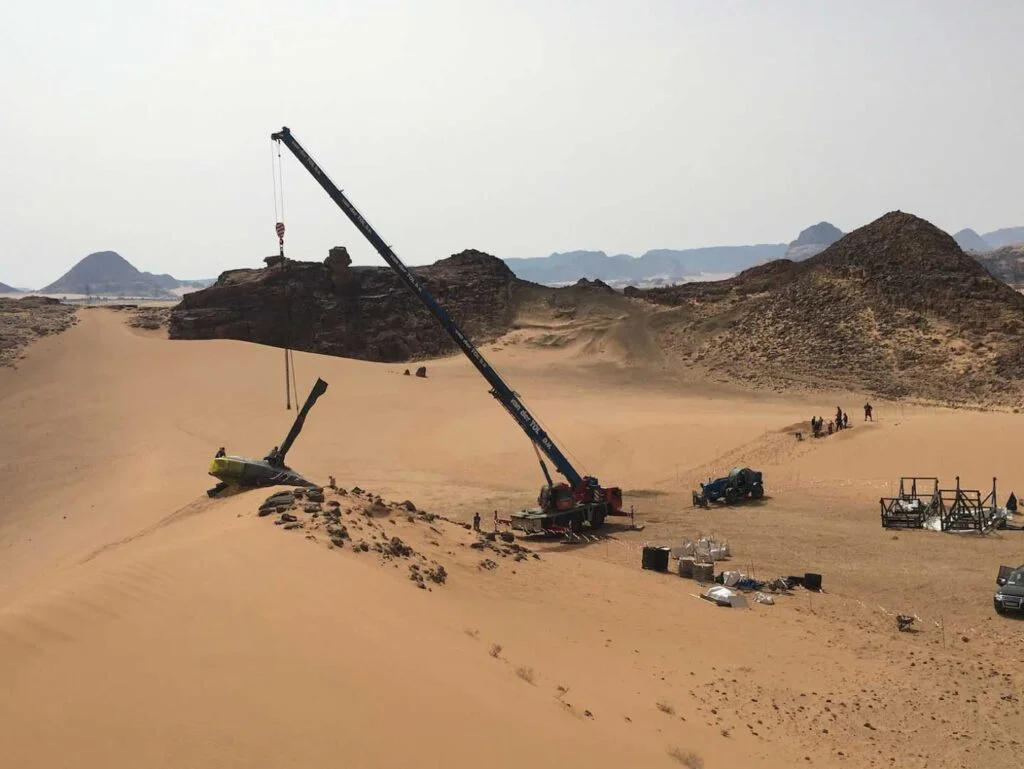
Vermette commented first regarding Arrakis:
First of all, you need to understand what the planet is. You have to imagine the planet naked without anybody in it. And that’s quite well expressed in the book… For instance, on Arrakis, the book says there is wind that goes from 850 km an hour. So architecture and design has to be a response to those elements. When you start making buildings, you’d probably want them to be on an angle, because the wind sweeps over them.
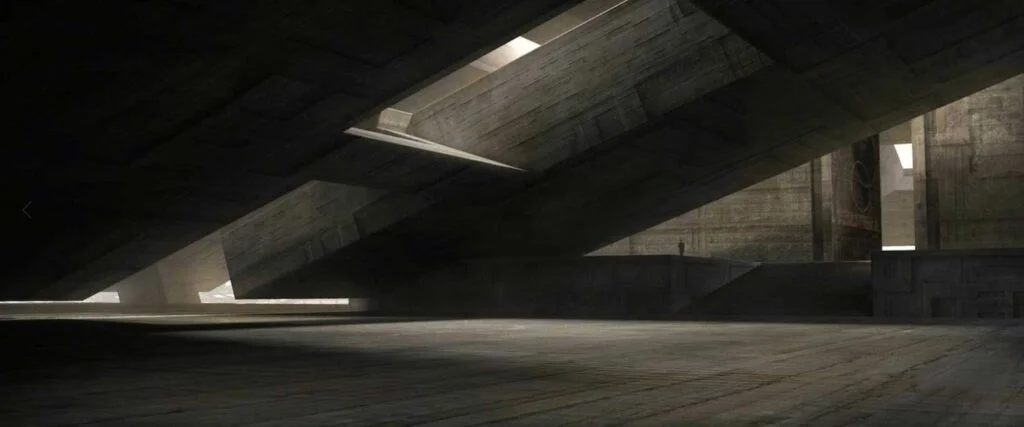
He went on to discuss the atmospheric design of Caladan sets:
You read the book and you know it’s a planet with islands and waters. The economy is based on fisheries, rice, and wine, so you include that in the design. There’s clues about medieval castles so you include that. You want to understand the past, so in the design, you include wall paneling that explains the history of the family. Same with the tombstones. It’s a very nostalgic moment because Paul [the film’s lead, played by Timothée Chalamet] is leaving a planet. So the atmosphere—what Denis and I relate it to, is fall in Canada. It’s not too warm, it’s not too cold. You always need to wear a little jacket. There’s always mist.
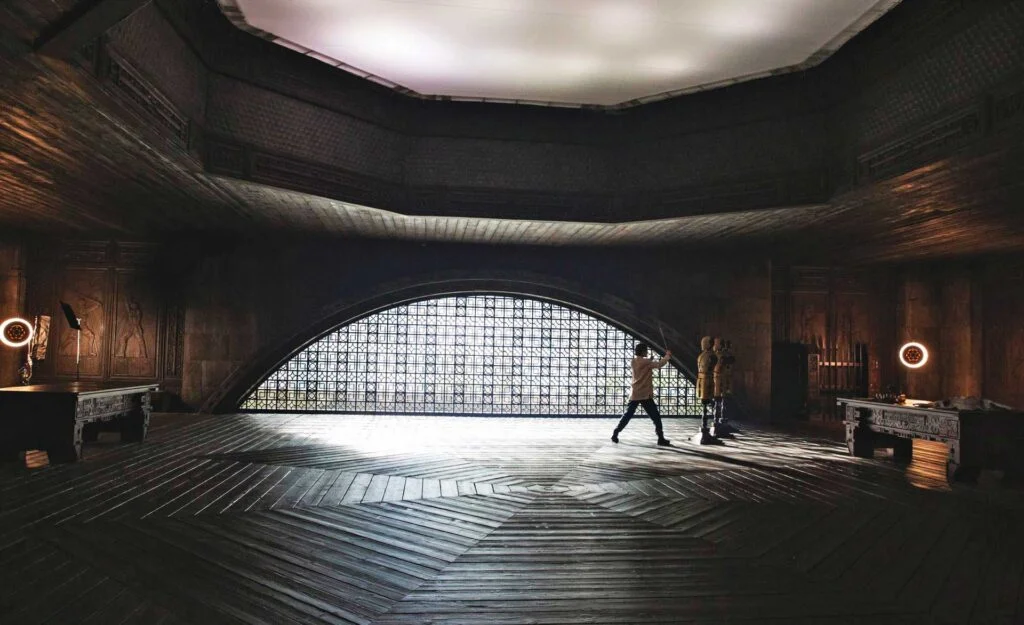
Simply put, Vermette and company were dedicated to ensuring the realism of the Dune universe in their designs. The final product speaks for itself, with viewers being engaged in a visual experience that’s out of this world and establishes its own reality.
The production designer had several inspirations for the structures and architecture of the movie, coming from patterns used in a variety of cultural design. When asked about his inspirations for the sets he explained:
“There’s Mayan and Aztec architecture in the references. On Caladan, I spoke about the medieval [references], but there’s also Japanese architecture and influence. It’s a mix of a lot of things.”

He also talked about wanting to incorporate a brutalist look, influenced by the colonial show of power from House Atreides. Of which, he took inspiration from Brazilian architecture. Patrice Vermette remarked:
Going back to Arrakis, you understand the city was founded after the discovery of spice. It’s a colonial entity that arrives on Arrakis to exploit the natural resource. What does a colonial entity do when it goes to a new country? They want to show their power. That’s where the influence of Brutalist architecture [came in]. The mansion or palace is the biggest palace ever built by humankind. Then you get a sense of scale. Scale also helps Paul’s visual journey as something more comforting, nostalgic, romantic on Caladan, to the harsh reality of Arrakis. It’s bigger than anything he could’ve imagined. So that’s the process of the design.
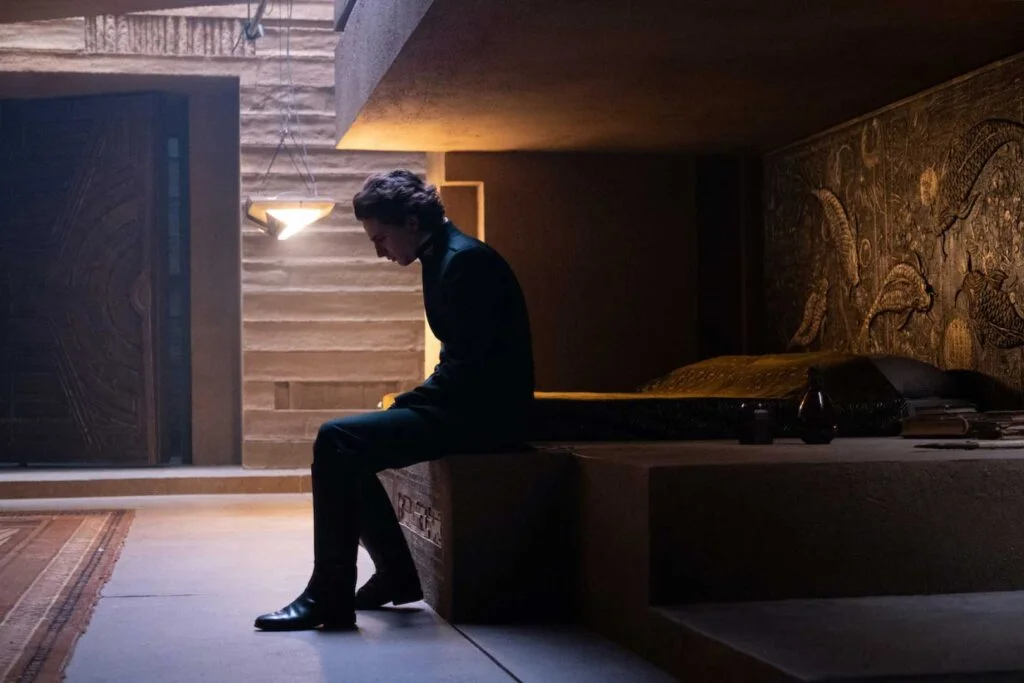
This type of ambitious design was certainly not easy to achieve. Vermette was questioned during the interview, regarding the greatest hurdles of creating cinematic science fiction sets for the movie. His answer: “The biggest challenge was the Imperial Nexus laboratory main room.”

Vermette explained that specific set in great detail:
Normally that set would’ve been 150 feet high, but we only had 65 feet. So with computer models and sun orientation we calculated the size our ceiling would need to have with false perspective, so the sun going through it would create the right dimension for the shadow on the floor. Since the sound stages were in a weird orientation in the sun path, we had a very tight window to shoot that scene. It was between 10:45 and 11:20 in the morning.
And because the roof was made out of fabric, we needed a day without wind and we needed a whole week and a half without rain because of the sand. We had agricultural machinery to turn over the sand to make sure it dries. That was crazy enough to work.
Enlightening and reassuring, these two words adequately describe my thoughts on this interview with production designer Patrice Vermette. If you would like to read the original discussion, Shaping Design has that for you, here. Looking forward to what awaits in the future of the Dune universe.
Here are more behind-the-scenes photos from the movie set, as revealed during the interview:

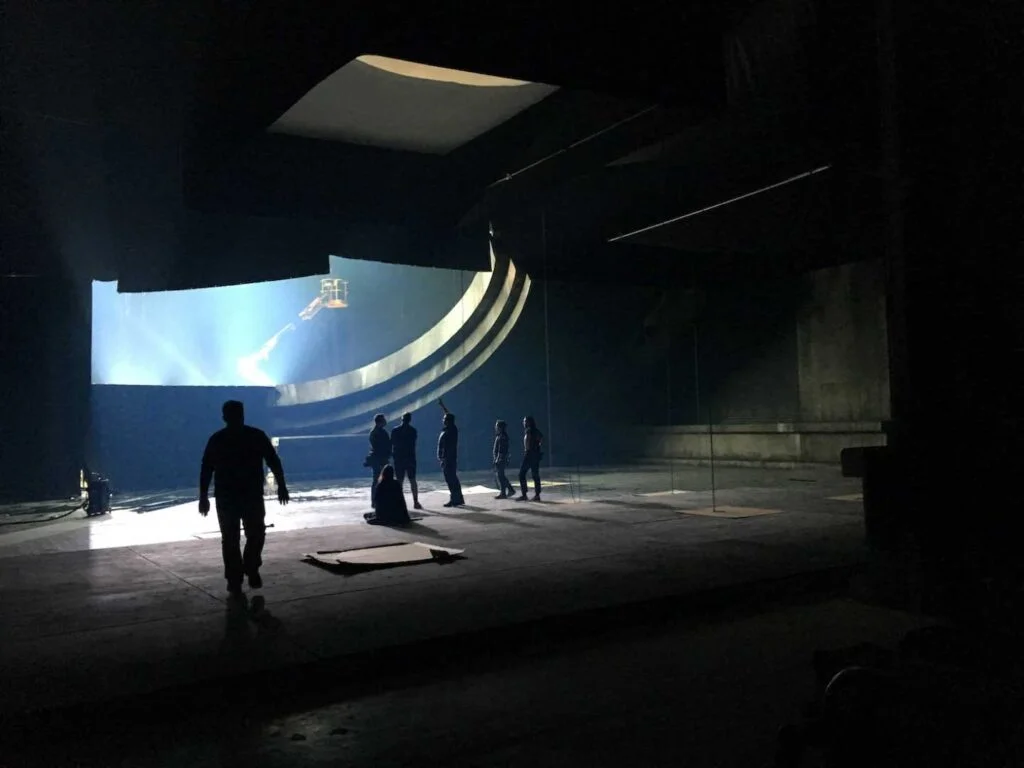

Source: Shaping Design Blog via Lilly Smith (October 20, 2021).


